By: Heidi Ware Carlisle and Aaron Connolly
As our programming at the Boise River site expands year by year, we continue to get even more excited about this area and the work we’re doing.
This year the theme was one of overcoming adversity, and thanks to our many partners and supporters, we did just that!
We also have some major projects coming up in 2021 that we’re excited to tell you about! Be sure to read Greg’s article on our newest project supported by Micron Technology.
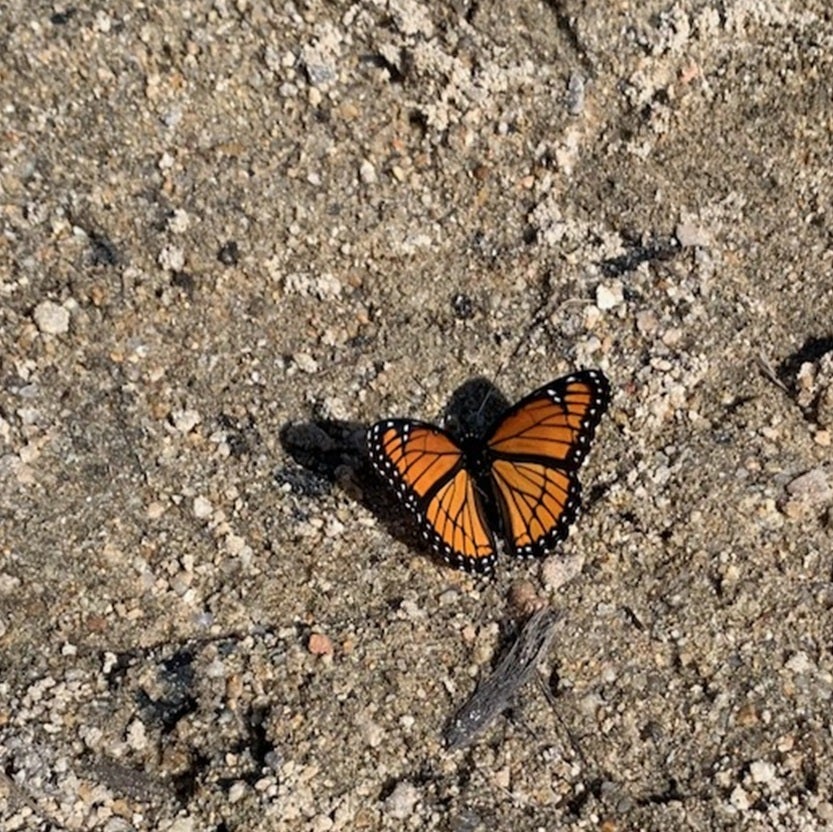
2020 of course ended up being a much more unusual season than anyone could have ever predicted. With the Coronavirus Pandemic and all the complications that came along with it, our team was challenged like never before, yet still managed to pull off amazing summer and fall projects!
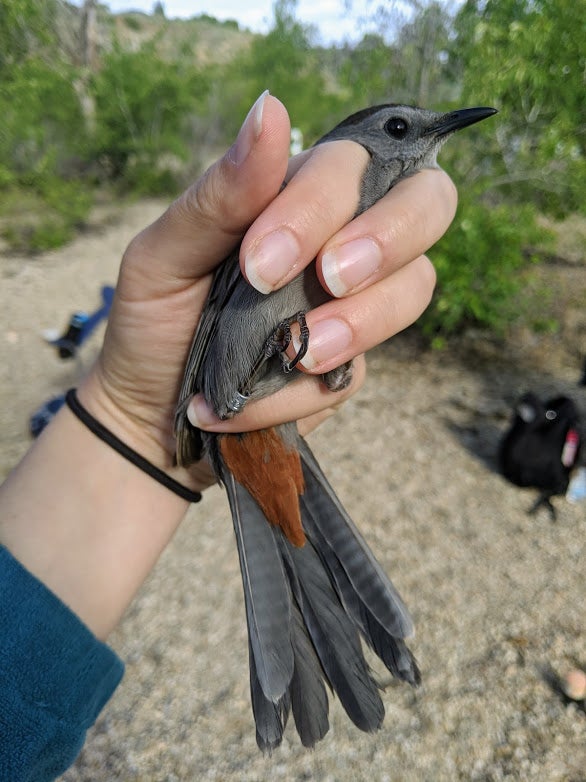
Interns
This year we hired three undergraduate interns from Boise State University and College of Western Idaho. Aaron Connolly (Boise State), Kelly Smith (CWI), and Mia Cinello-Smith (CWI) worked hard all summer to water our seedlings, plant cottonwood saplings, and collect data on seedlings survival.
Aaron, returning for his second year as an intern on this project, took on the task of coordinating our new (socially-distanced) volunteer Adopt-a-Plot program. Here’s what he says about this new project:
IBO has taken a somewhat unique approach to this restoration by bringing community volunteers onboard to help care for and maintain our experimental plots of native plant seedlings. Cheatgrass and other invasive plants like rush skeleton weed and tumble mustard have taken over much of the site, and if not removed from some areas, may make the restoration attempts less than effective. Inviting community volunteers to “adopt” our experimental plots helps us so much more than one might think. Spreading out the workload of weeding frees up our restoration intern team to plan for future projects.
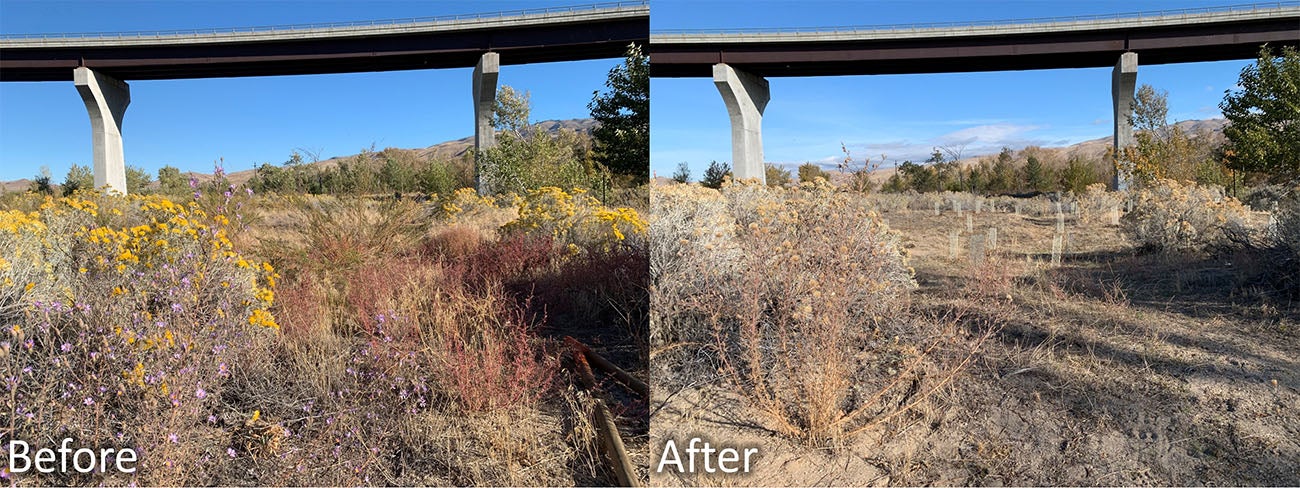
In spring 2020, we launched our Adopt-a-plot program which invited volunteers from around the Treasure Valley to take part in the restoration. We successfully adopted or weeded all 75 of our experimental plots over the summer! We cannot say thank you enough to those who were involved and we are very excited to see how the efforts they put forth will have helped transform the site.
Thanks to all of you who signed up to care for a plot in our habitat restoration areas!
Partners in Science
Thankfully, catching butterflies is the perfect summer activity during a pandemic! Borah High School teacher John Schisel, spent his second summer at the Diane Moore Nature Center thanks to the M.J. Murdock Charitable Trust sponsored Partners in Science program. John worked to document insect biodiversity at our station, with a special focus on hymenoptera (bees, wasps, and ants).
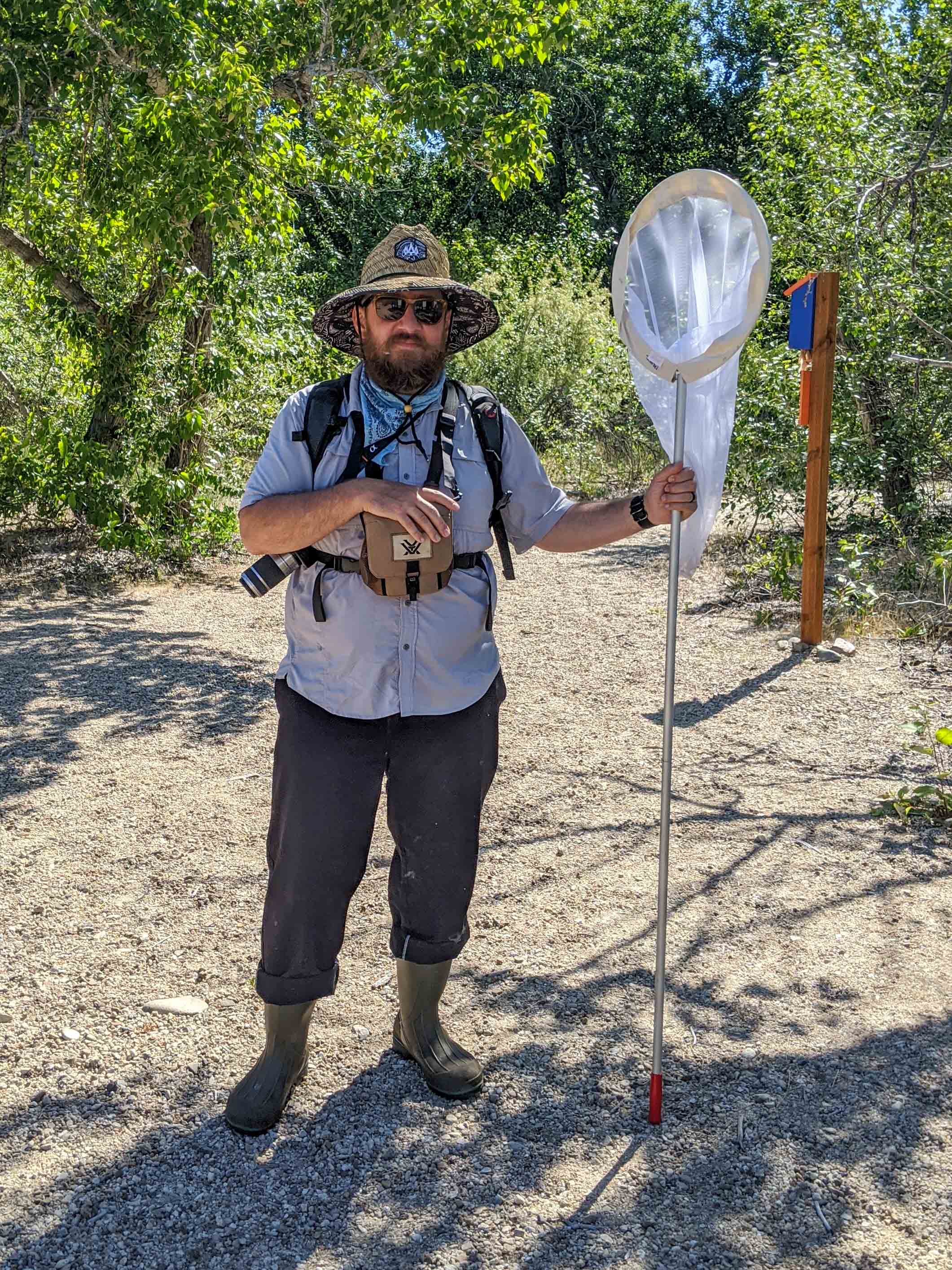
John and IBO super-volunteer Gretel Care worked to measure insect diversity before we restore the side channel.
This will give us critical information on how our habitat restoration changes the ecosystem.
Their research fills in an important piece of the puzzle when you think about the food web at our site. We now have data on the ecosystem all the way from the plants, up to the insects, up to the birds!
Banding
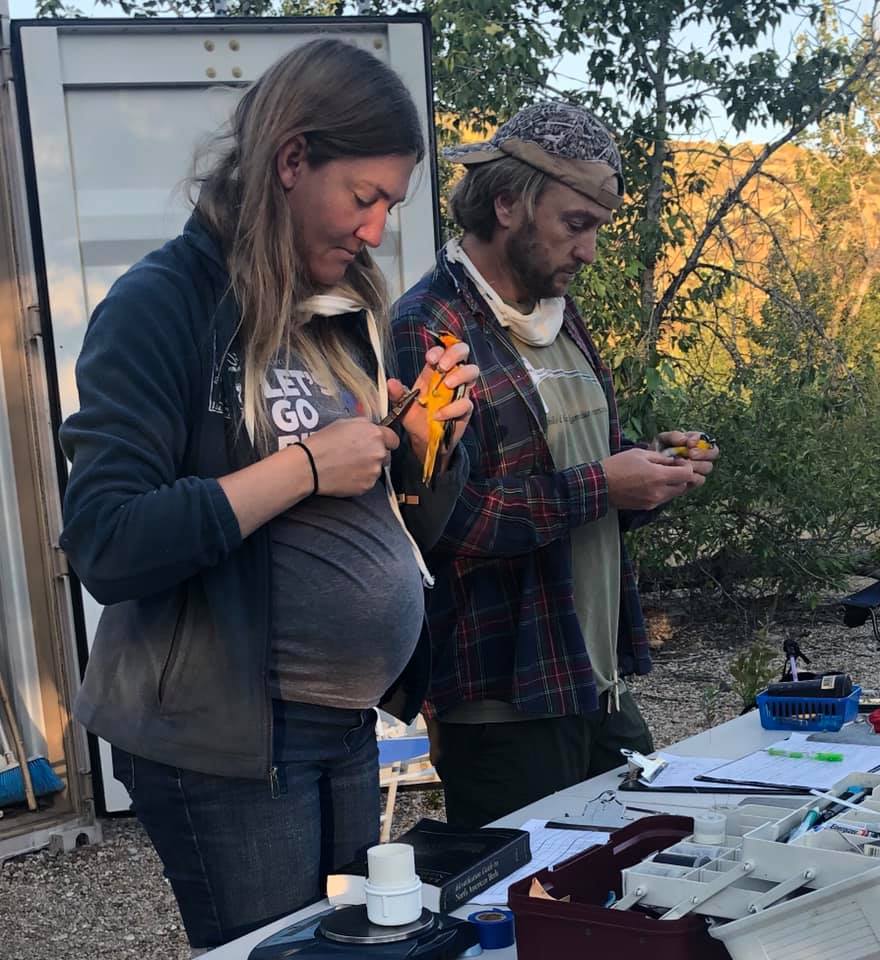
We were saddened to close our public banding days this summer and limit our volunteers. But with a skeleton crew separated out by household, we continued to operate our Boise River Banding Station. We completed 5 important MAPS monitoring days before baby Felix Carlisle made his appearance and put a stop to the season. :) We are so thankful for our dedicated volunteers who helped make safe banding days possible. We are also grateful for our understanding group of volunteers who couldn’t join us. Thank you for dealing with the torture of missing out!
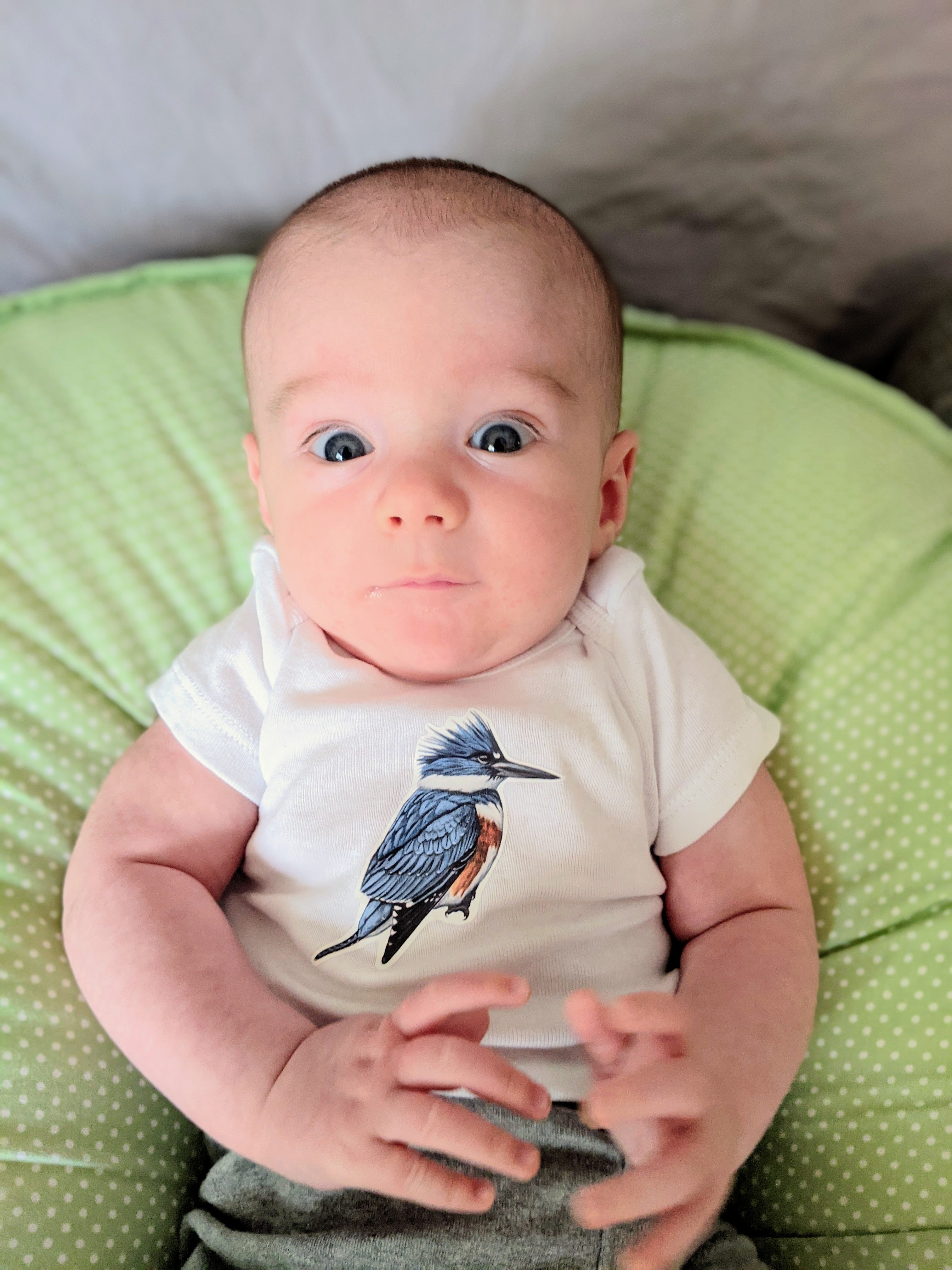
Even with a shorter season than normal, we banded a number of Red-eyed Vireos (3), including a female with an egg in her belly! We also banded higher-than-average numbers of Gray Catbirds (18) and House Wrens (35).
These species rely on healthy riparian habitat and thick undergrowth, so we are proud that our site is able to host such a high number of these birds.
We now have 6 years of data on the breeding birds at our site. Once we restore the side channel (link) we’ll be able to make before and after comparisons to help us measure our success!
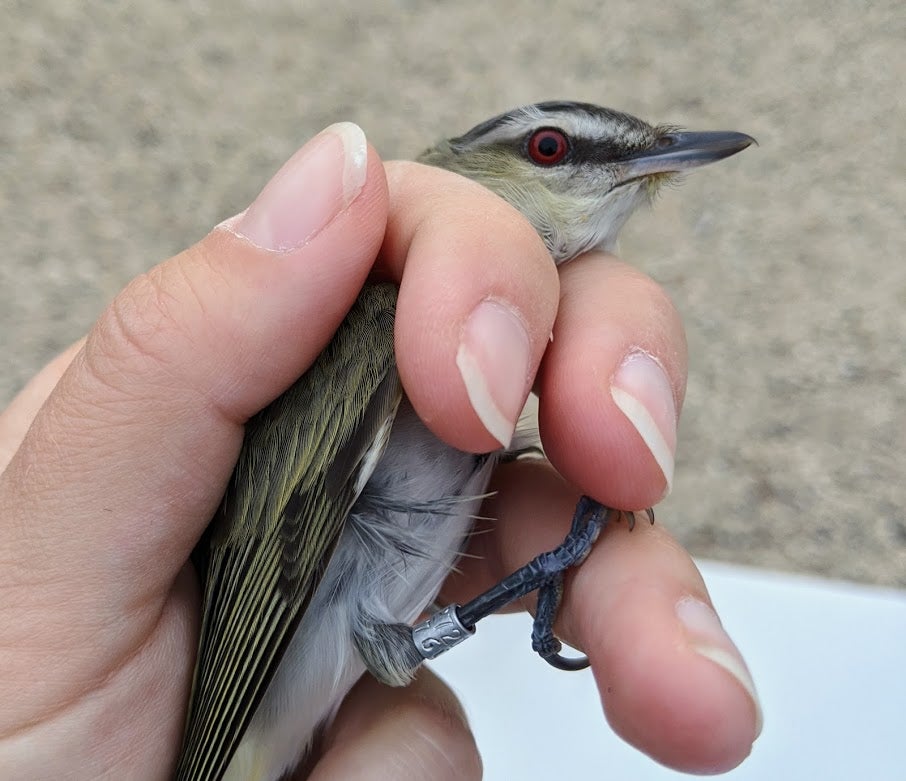
Planting
Last but not least, we were still able to pull off an amazingly successful planting day this fall despite the pandemic! We have always relied heavily on our partners like Idaho Fish and Game, and Professor Dusty Perkins of CWI to get our planting days done.
But this year more than ever, our partners really poured their hearts into making this project a success.
Here’s what Aaron says about the planting day:
The COVID-19 pandemic of 2020 has proven difficult to navigate for so many conservation groups and IBO has seen its share of challenges. Despite the difficulties this year, the restoration effort has really ramped up at the Diane Moore Nature Center. Our annual fall planting put on by IBO, Golden Eagle Audubon Society, the Idaho Department of Fish and Game, the College of Western Idaho and the US Fish and Wildlife Service, took a new direction this year. It was designed to take social distancing and group size recommendations into account. Over the course of two weeks, we added an additional 2,000+ native seedlings to put the total count at well over 5,000 seedlings planted since 2018. With that many plants comes an immense need for help from our amazing community volunteers.
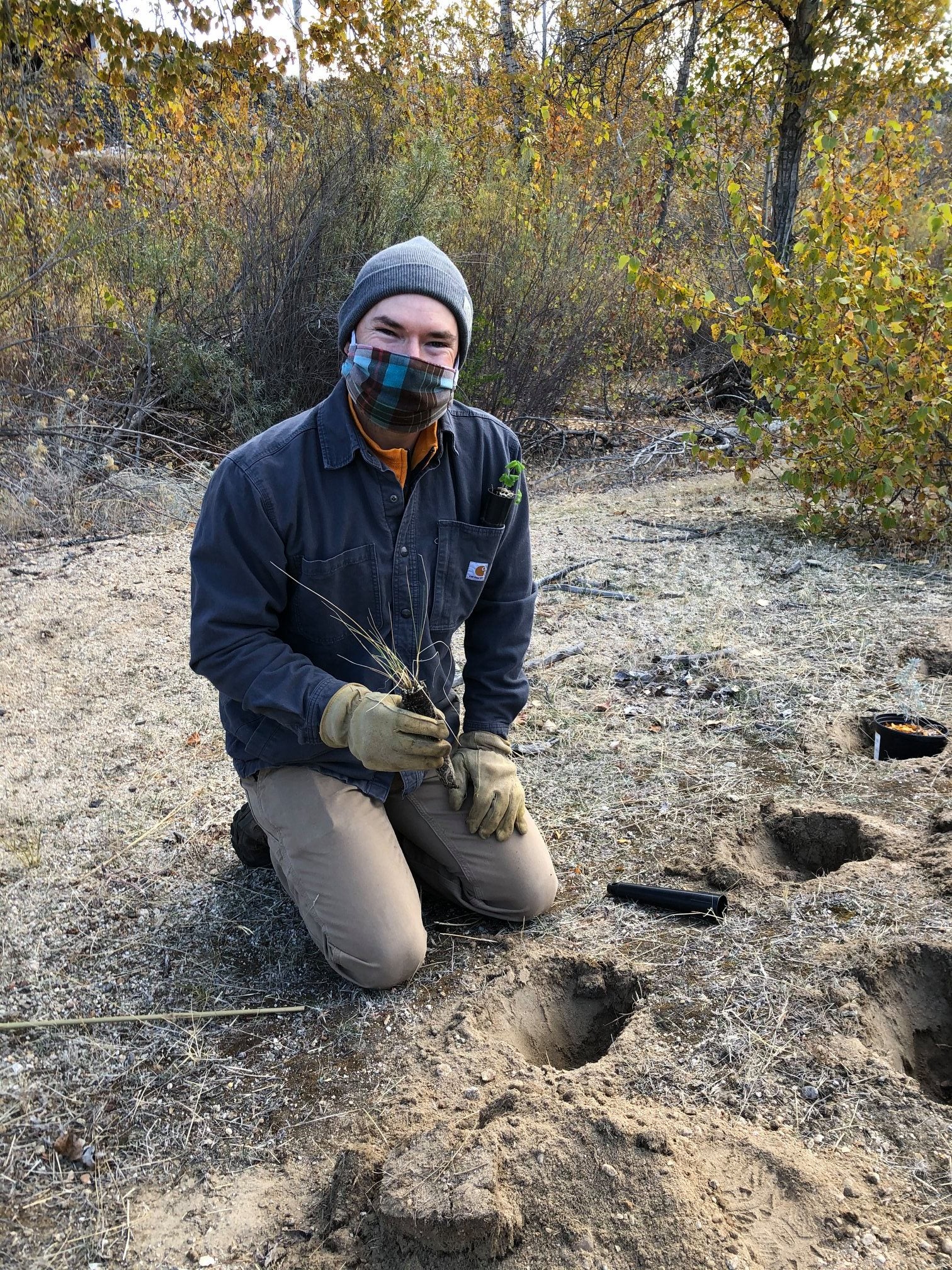
We also have to give Sean Finn of Golden Eagle Audubon’s Native Plant Network a HUGE shoutout for all of his work this year running the planting program.
While I was on maternity leave and unable to help, Sean reached out to partners, worked with our interns to coordinate volunteers, and created a meticulous plan for COVID-safe, socially distanced volunteer opportunities. He worked with the team to create training videos for our volunteers to watch before they arrived, and spread out our restoration efforts over the course of a week so that each household of volunteers could work safely on their own section of the property.
What’s next for our restoration work?
Aaron writes: With a first successful Adopt-a-plot season under our belt, we are ready to hit the ground running in the spring of 2021. With many volunteers returning to continue caring for their plots, we are hoping to get a jumpstart on the cheatgrass this year. It is an annual grass which means it sprouts from a seed, grows to maturity, and produces new seeds, all in one season. These new seeds will be dropped and will sprout again when conditions are right but the plant itself dies at the end of the year. Our hope with adopt-a-plot is that our volunteers will clear the cheatgrass before it gets a chance to mature and drops its seeds. That is our best chance at getting ahead of this incredibly prolific invasive grass.
Another exciting development at the Diane Moore Nature Center happened recently. The approval to begin the restoration of a historic river side channel has come through! Be sure to read Greg’s article about this great news to get all the details. From a restoration perspective, our partners and interns are excited because This project will bring with it many benefits like increased recharge to the water table and more habitat for birds, bugs and even fish. But perhaps most importantly, it will partially restore the effects of the spring swell from snow melt in the high country. These yearly swells used to naturally propagate black cottonwoods all along the river corridor. The high water would spread seeds from the trees down stream and the slow recession into the early summer would allow the seeds to germinate in the sand and gravel along the riverbanks. With flood control established upstream, these natural ebbs and flows will never be the same, but our side channel will bring with it some remnant of what once was.
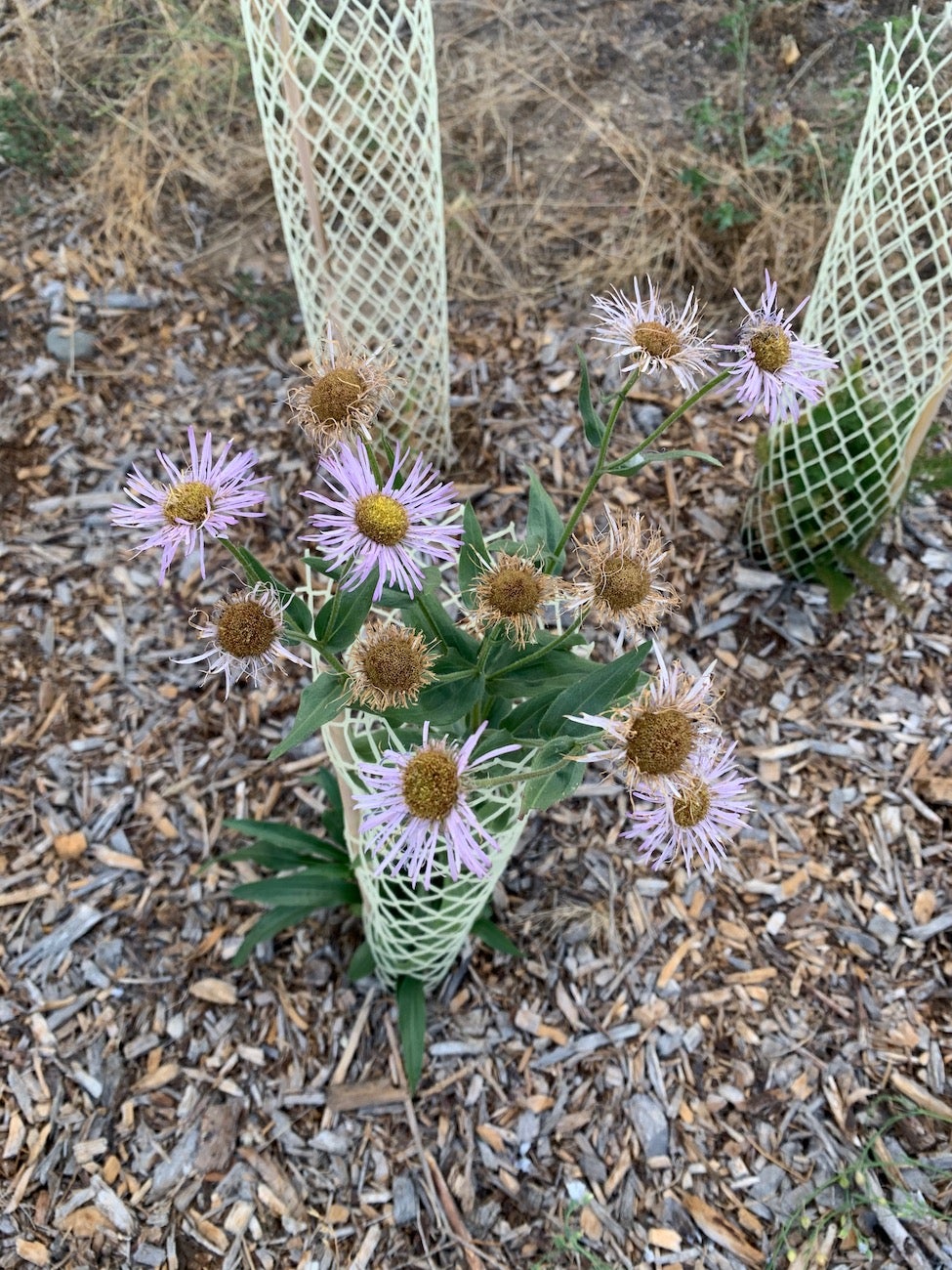
Although this year has been a tough one, the future of the Diane Moore Nature Center looks bright and we cannot wait to share it with our community! If you are interested in being a part of the restoration or are just looking for a great place to go for a walk, you can sign up to volunteer for adopt-a-plot this spring, and find out how to visit the Diane Moore Nature Center.
What’s next for outreach?
IBO’s strength has always been in our hands-on learning opportunities for students and visitors to our stations. But in the midst of a pandemic, what are we to do? We’re working hard to connect with teachers and find out what is possible and what will help them the most in these strange times.
Because we had to cancel our public banding sessions this summer and fall, donations for these efforts are far below normal.
You can still help support these annual projects, if you’re able, by making a much-appreciated year-end donation.
In another effort to raise much-needed funds to help keep our outreach work going we’ll be teaching classes this winter and spring. The first will be my “Migration Mysteries” class that I first taught in 2018. I hope you’ll join me for the class, and invite a friend or two! All the proceeds will go toward making sure we can continue our work connecting the community with our research programs.
This article is part of our 2020 end of the year newsletter! View the full newsletter here, or click “older posts” below to read the next article.
Make sure you don’t miss out! Sign up to get our annual email update.